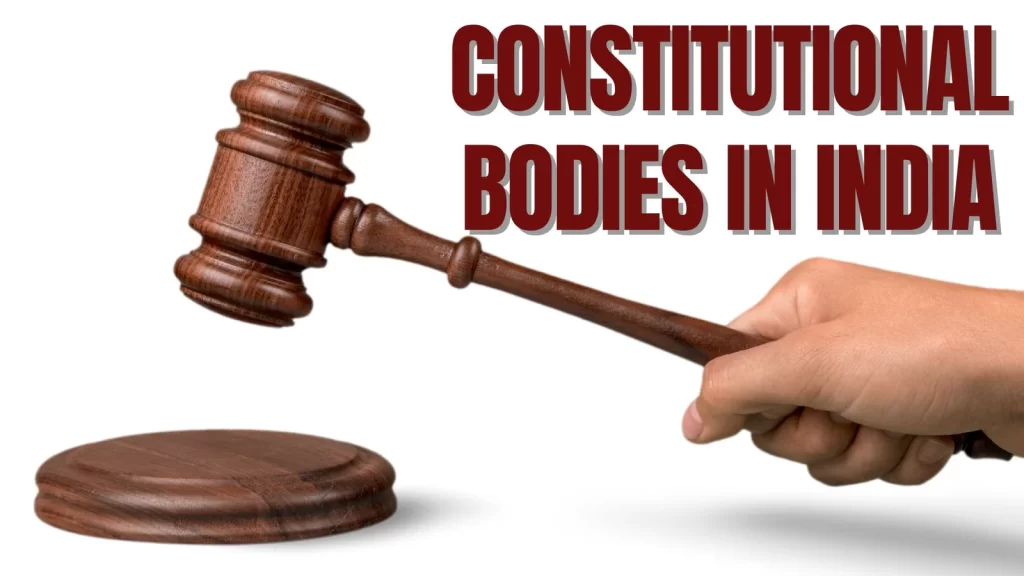Difference Between Extra-constitutional Bodies and Statutory Bodies
To understand the difference between extra-constitutional bodies and statutory bodies, first, we have to understand the Constitutional Bodies, Non-Constitutional Bodies, Extra-Constitutional Bodies, and Statutory Bodies. Then we will know the difference between them.
What is a Constitutional Body?
Constitutional Body refers to an institution or authority that derives its powers and responsibilities directly from the Constitution of India. The Constitution either directly establishes these entities or mandates their creation, outlining their composition, powers, functions, and duties. These bodies are explicitly mentioned in the Constitution, making them a fundamental part of the country’s governance and administrative structure.
- Those bodies whose formation is prescribed by the Indian Constitution itself are known as Constitutional Bodies.
- They derive their powers and authority from the Indian Constitution.
- A constitutional amendment is often required to change any powers or functions related to such bodies.
What is a Non-Constitutional Body?
Non-constitutional bodies are institutions established either through statutes in the case of a Statutory Body or through executive resolutions in the case of an extra-constitutional body. Although not mentioned in the Constitution, these bodies play crucial roles in the governance and administration of the country. They ensure the implementation of specific policies, provide expert advice, and oversee various sectors.
- A non-constitutional body is an organization or institution that is not mentioned in the Constitution of India.
- Unlike a Constitutional Body, a non-constitutional body does not derive its powers from the Indian Constitution.
- Usually, a non-constitutional body derives powers from corresponding laws passed by the Indian Parliament (in case of a Statutory body) or through executive resolutions (in case of an extra-constitutional body)
Classification of Non-Constitutional Bodies
Non-constitutional bodies can be broadly classified into two categories :
- Statutory Bodies – They get the power from a statute (i.e. an Act enacted by the Legislature). Ex.: National Investigation Agency (NIA), National Human Rights Commission (NHRC), Lokpal and Lokayukta, etc.
- Non-Statutory Bodies or Extra Constitutional Bodies – These bodies were neither created by the Constitution nor by any law of the Parliament. They usually get the power from an Executive order. Ex.: NITI Aayog, National Development Council (NDC), etc.

Conclusion
So, constitutional bodies are mentioned in the Constitution, but non-constitutional bodies are not. Again, Non-Constitutional bodies are of two types. Those that derive power through laws made by the Indian Parliament are called Statutory bodies, and those that derive power through executive resolutions are called extra-constitutional bodies.
Also refer,
Difference Between Mandal And Kamandal Politics
Difference Between Procedure Established By Law And Due Process Of Law
Polity MCQ PDF








